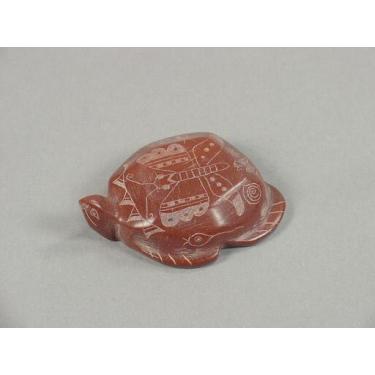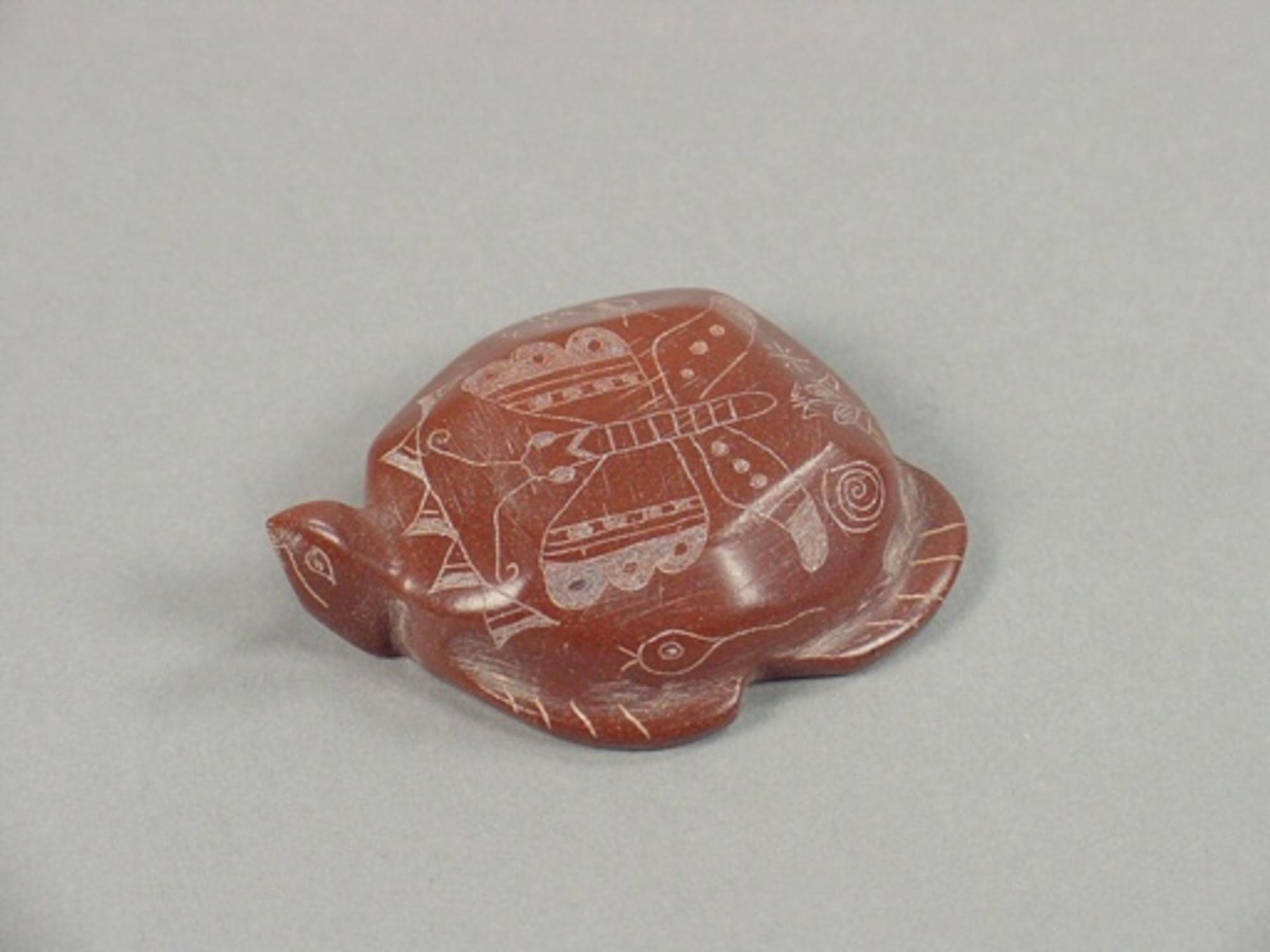
Carving, turtle
Date: 1998
Artist or Maker: Adrian Cachini
Dimensions:
5.6 × 4.8 × 1.6 cm (2 3/16 × 1 7/8 × 5/8 in.)
Medium: pipestone
Credit Line: Bequest of Estelle Rebec; received at the Indian Arts Research Center in 2006.
Place Made:
Zuni Pueblo, McKinley County, New Mexico, Southwest, United States, North America
Object Number: SAR.2007-1-67
Not on view
Tribal Collection Review RemarksJim Enote and Octavius Seowtewa during collection review visit February 16 and 17, 2011 (Events Record “Collection Review: Zuni Tribe, Review 6”): The material used in this carving is an unknown red stone (possibly jasper). The turtle is carved with several small figures on its back, including a butterfly, corn plant, spiral (not a “swirl” as it is called in the current catalog description), star, feathered clouds, a Flute Player, and a tadpole. The Flute Player is known in the Zuni language as “Bayadamu.” The tadpole is called “mudulikya” in Zuni. The piece is signed “Adrian // Cachini // Zuni, NM” on the bottom. The Zuni word for turtle is edo:wa.
Though small carvings such as this, usually depicting an animal, are frequently referred to as “fetishes,” it is important to note that they are not true fetishes. True fetishes are made and used specifically for spiritual or ceremonial purposes and uses. This type of item, however, is made specifically for sale. It is more appropriate to refer to commercially-made figures of this type as “carvings.”
Carvings produced for commercial purposes depict a wide variety of animals, but there are only six animal depictions that can become true fetishes. They are animals that are associated with the six directions, which are each associated with a particular color. The six animals should be carved from a stone that is the color of the associated direction. The six animals and their corresponding directions/colors are: Mountain Lion-North-Yellow; Bear-West-Blue; Badger-South-Red; Wolf-East-White; Eagle-Sky (Up)-Multi-color; Mole or Shrew-Underworld (Below)-Black. Any of these six animal carvings can become a true fetish, IF it is given a spiritual life by certain Zuni religious leaders. These fetishes would be used by Zuni people for protection, and by Zuni hunters, depending on which animal is chosen for the fetish, for assistance in the hunt.
In Collection(s)
The Indian Arts Research Center, in collaboration with Native American community scholars, strives to present accurate collections records. Records may be updated as new information becomes available and is reviewed with the Native American community having cultural affinity to particular items. Please write to iarc@sarsf.org if you have questions or concerns related to the documentation.
